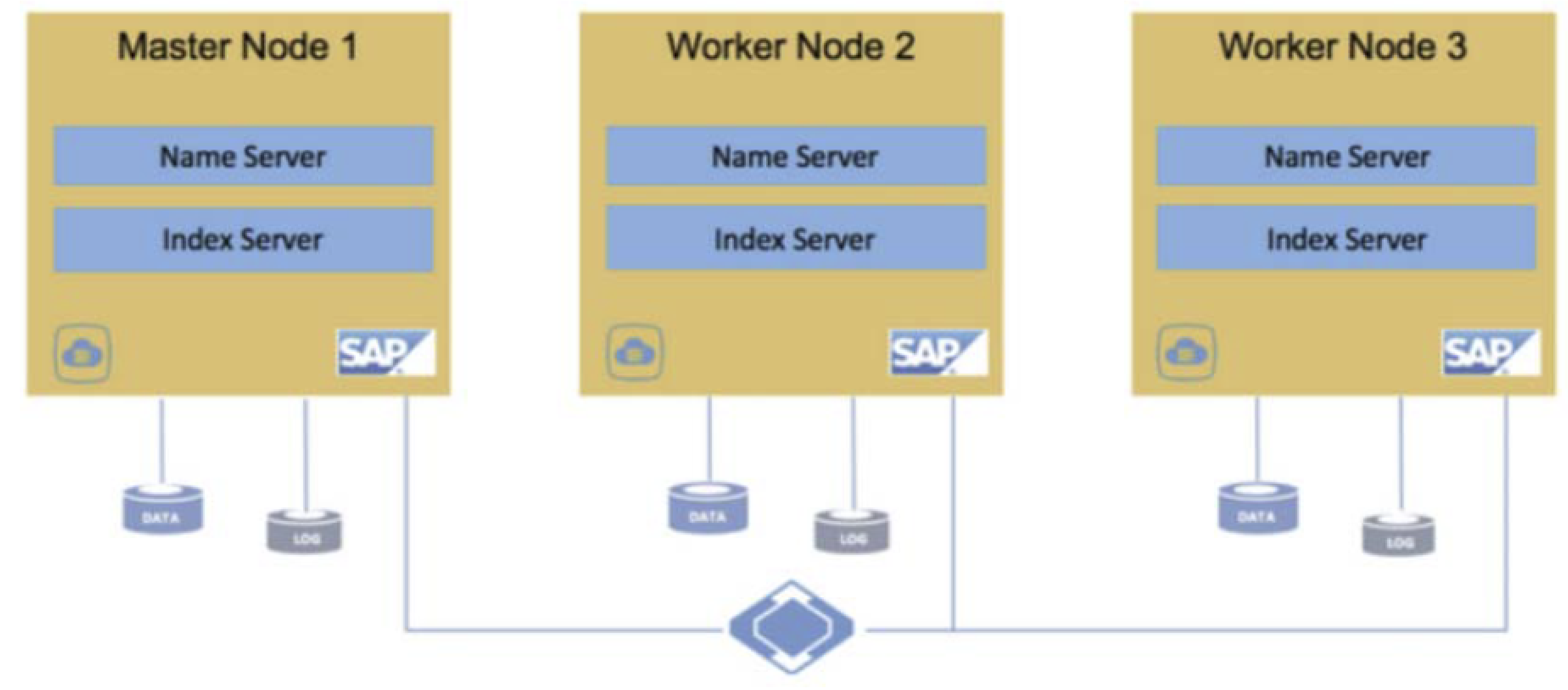This page includes information about protecting HANA 1+n and HANA scale-out.
Protect HANA 1+n
To protect a HANA 1+n replication cluster as a single application, the application
has the cluster host as sid name_cluster after application discovery. For
example, if sr1 is the HANA instance, then the application name is sr1 and the
hostname is sr1_cluster in the App Manager Applications list.
The HANA log backup destination must be shared between two nodes. When failover occurs, the database and log backup automatically fails over to the current primary, and log backups are performed from the current primary, capturing the last logs from the old primary as well as new logs from the new primary. Follow the preparation steps in Prepare your SAP HANA databases for protection.
HANA 1+n is always discovered as cluster application containing all node details in the metadata. It is a good idea to run a force discovery after any changes to cluster node configuration—such as after adding or deleting a node from the cluster. If a node is removed or added after discovery and protection, the configuration does not be updated automatically in Backup and DR metadata, and may cause backup issues.
Prerequisites for protecting SAP HANA 1+n instances and databases
Before protecting SAP HANA instances, ensure the following:
- If hosts have virtual IPs configured, add only the virtual IP and hostname of the primary host during discovery.
- The Backup and DR agent must be installed on all nodes.
- Ports need to be opened on the hosts to allow communication on port 5106. This requires an ingress firewall rule where the backup/recovery appliance is the source, the host running the agent is the target and the target port is 5106. Also, there is no need to add port 5106 to the default ingress rule created for the appliance, as this specifies the appliance as the target.
- HANA log backup location must be set on shared—NFS.
Protect HANA scale-out

Prerequisites for protecting SAP HANA scale-out instances
Before protecting SAP HANA scale-out instances, be sure that the following is complete:
- If hosts have virtual IPs configured, add only the virtual IP and the associated hostname of the primary host during discovery.
- The Backup and DR agent must be installed on all nodes.
- Ports need to be opened on the hosts to allow communication on port 5106. This requires an ingress firewall rule where the backup/recovery appliance is the source, the host running the agent is the target and the target port is 5106. Also, there is no need to add port 5106 to the default ingress rule created for the appliance, as this specifies the appliance as the target.
- For backint file based—Full+Incremental—backup, the HANA log backup location must be set to shared—NFS. See Add the host to the management console.
For storage snapshot protection
- Data and log volume are non-shared across all nodes
- Data and log volumes are managed by logical volume manager (LVM)
- Ensure mnt000* directories exist on the local mount points to identify the primary and secondary nodes
Follow the setup procedures in Prepare your SAP HANA databases for protection.
Backup and DR Service documentation for SAP HANA scale-out
This page is one in a series of pages specific to protecting and recovering SAP HANA scale-out instances with Backup and DR Service. You can find additional information in the following pages:
- Backup and DR for SAP HANA scale-out
- Prepare SAP HANA scale-out instances for backup
- Add an SAP HANA scale-out host, and discover and protect its databases
- Configure staging disk format and backup method for SAP HANA scale-out
- Set application details and settings for SAP HANA scale-out instances
- Back up HANA 1+n and HANA scale-out databases
- Restore and recover SAP HANA scale-out instances
- Mount an SAP HANA scale-out backup as a standard mount
- Mount an SAP HANA scale-out backup as a virtual database
- Mount and migrate an SAP HANA scale-out backup for instant recovery to any target
